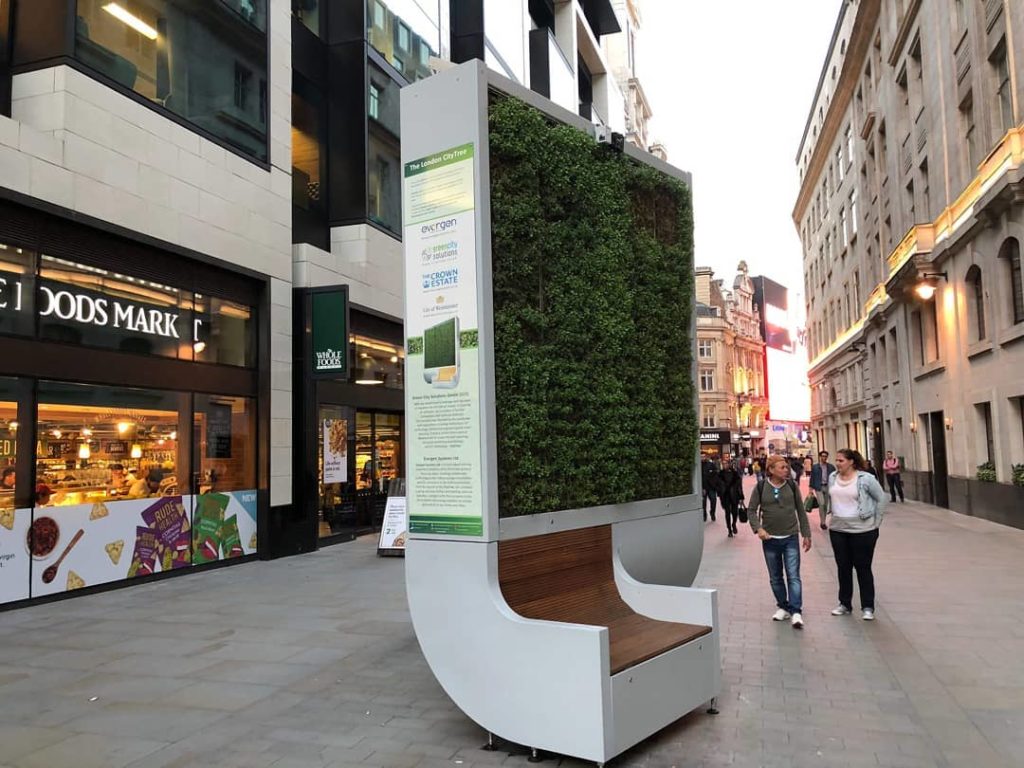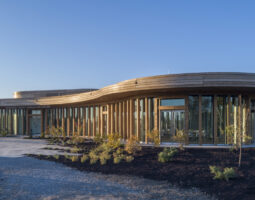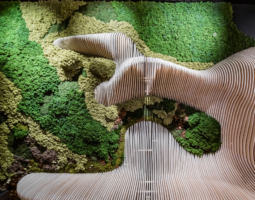Specifically, London is a group of smart cities – it comprises of 33 boroughs. Despite its complexity, the metropolis grows steadily, consistently fulfilling the strategy of a smart city. According to the London’s Mayor, Sadiq Khan, the key to success is close cooperation at three levels: regional, subregional and local.
London is a city which attracts the greatest number of technological investments in Europe. It is a capital of culture with as many as 240 museums. London’s underground network is also the oldest in the world, and the Heathrow airport is the largest such object in our continent. 60 million passengers are checked in there annually. The English capital wants to become a leading city, packed with innovative IT solutions. The city’s Mayor, Sadiq Khan, said: “I see London’s future as a global ‘test-bed city’ for civic innovation, where the best ideas are developed, amplified and scaled”.
I strongly recommend reading the article about this exceptional city packed with technology and innovation.

SMART ARCHITECTURE
The London’s post-war period was the time of changes and fascination in modernity. High rises began rising en masse in the 60’s. When writing about interesting structures in the city, I feel obliged to mention the highest building not only in the English capital but the entire Western Europe. The Shard, designed by Renzo Piano, is a skyscraper whose shape resembles an elongated pyramid. It has as many as 72 floors, and it is 309.6 metres high. From its observation deck we can sight remote corners of London located even 40 miles away. Thanks to its unique design, the building maintains a stable temperature inside. Excess heat generated by offices is used for heating the hotel and apartments located in the building. The designer was able to limit the building’s energy consumption by 30% when compared to a typical skyscraper.

source: standard.co.uk
The Olympic Stadium revolutionised thinking about building sports facilities. The main building of the Olympic Games in London was nominated for the prestigious Stirling Prize in architecture. 247 hectares of lawns and flower gardens as well as a riverside promenade were built in its vicinity. The entire complex is a masterpiece of engineering – it is a great combination of an English garden and modern approach to integration of green spaces into the metropolitan landscape. Plants growing in the Olympic Park are adapted to climate changes and grow together with the city. Just next to the stadium there is the ArcelorMittal Orbit – a red, twisted steel tower. It is both a sculpture and observation tower.

source: londonplanner.com
London Eye is world’s tallest observation wheel. It is 135 metres tall and consists of 32 glass-panelled capsules. Thanks to its gradual rotation, the visitors can observe the steadily changing city’s perspective. Interactive guides can be found inside each capsule, and they provide information on the capital’s iconic historical monuments. One revolution of the wheel takes about 35 minutes.

Construction of a new building, named Tulip, is planned for the year 2020. It envisages an observation deck at the height of 300 metres. Inside there will be also restaurants, pubs and an educational complex for the “classes in the clouds”. Around 20,000 free visits for state school children will be offered each year. The tulip will be packed with the latest technology which, thanks to the technology of augmented reality, will allow interactive sightseeing of the city. Solar panels will also be installed on the building, making it self-sufficient in its energy needs. The Tulip is not going to be just another “boring” office building but a cultural heart of the city. If the project gets authorisation from city’s authorities, its construction should be started in 2020 and completed five years later.

source: dezeen.com
SMART TRANSPORT
As projections show – London is going to swell by 1.2 million inhabitants by 2031. What does it mean? Greater numbers of people using urban public transport. Despite the fact that the British capital has an advanced system for managing mobility, the city’s authorities are fully aware that it may not be enough to ensure appropriate conditions for movement of inhabitants in future. In the near future, the perfectly functioning London underground and bus transport may not be enough for satisfying the growing numbers. In the coming years, the city wants to completely eliminate paper tickets and oyster cards which enables their holders to travel in means of public transport. They are to be replaced by contactless payments. Even today, about 60 million journeys are paid for using a payment card. Such solution saves time of travellers and significantly increases efficiency of the entire transport.
The city also focuses on ecology. In 2003, London introduced tolls for entering the city centre. This decision substantially reduced traffic and pollution. Electric cars are exempted from the tolls, and their numbers are steadily growing. Also, London cabs were replaced with vehicles equipped with an electric engine, lithium batteries and hydrogen cells. The batteries allow covering the distance of 640 km.
The authorities think prospectively – therefore a requirement to provide for a charging station for electric vehicles was imposed on newly built facilities. A publicly available web map of such stations located in London already functions.
The city transport is complemented by: characteristic and famous buses, London Overground trains, Emirates Air Line cable car and trams on the southern side of Thames. An automate light metro system DLR is also interesting. It has been operating since 1987. Construction of the automated railway was a part of redevelopment of the Docklands area where city’s largest business centre is currently located. There are no drivers in these trains. Each set of wagons has only one staff member who functions as a conductor and in exceptional cases may take control of the vehicle.

source: YouTube/Majkelproductions
Bikes are London’s flagship means of transport. Docking stations for bikes are placed around the city centre every 300 metres to ensure convenient access to them. Electric bikes may be rented via the Lime system. These vehicles equipped with engine and accelerator reach the maximum speed of 23 km/h. Airless tyres are a very good idea – you do not have to worry about punctures. In turn, Barclays Cyclehyre System includes over 700 docking stations and 10,000 vehicles in the entire city.
In addition to that, London executes the project of the so-called cycle motorways. They are constructed in long sections which connect suburban areas with London’s centre. The aim of the project is to encourage people to make the switch from metro or buses to bikes. Already during the first year of the project, bike traffic has increased by 40%, while on the route coming from the east the increase reached as much as 80%.

source: private archive
HEALTH AND SAFETY
In the city, we can find numerous interesting solutions supporting health and safety of inhabitants. For example – cutting-edge panels are installed on a section of Bird Street and, from the footsteps of pedestrians, they generate electricity with power of 5W. It powers the lamps which light the street, Bluetooth transmitters and speakers which play bird sounds (to make walking more pleasant). Also, a special ClearAir bench is located on the smart street. It sucks in the air and blows out a filtered version which is free from, among others, harmful carbon dioxide. In addition to that, some walls along the street are covered with a special Airlite paint which absorbs particulates and pollutants.

source: private archive
The green wall, which you can see in the picture, has the surface area of just 16 sqm, but it cleans air from pollutants with the power of 275 trees! It also generates oxygen and cools the air.
The city’s plans provide for full fibre-optic connectivity for all new houses and support of smart technologies like, for example, a hyper-local sensor network. It will create the most advanced air monitoring system in the British capital.
In order to ensure safety to pedestrians, City’s authorities introduced Pedestrian SCOOT – a smart technology which optimises the green light time at pedestrian crossings. It collects data from 15 thousand detectors installed in close to 4 thousand locations London was the world’s first city with smart pedestrian crossings. They detect the number of people waiting for the green light and adjusts time intervals for change of lights.
Also, London’s police reached for smart technologies – it currently carries out tests with face recognition. However, they face the protests from a non-governmental organisation named Big Brother Watch, which wants to defend the citizens’ right to privacy. It is not surprising – an average Londoner is recorded several hundred times a day. It is probably the best monitored city in the world.

source: standard.co.uk
THE FUTURE OF LONDON
It is estimated that even before the year 2030 the population of London will reach 10 million. Heavy pressure on infrastructure, increase in energy consumption and waste will be apparent. It is expected that over 600,000 people will be using urban public transport during rush hours. This is quite a challenge for the authorities. And that was the reason for developing the MAYOR’s SMART LONDON PLAN several years ago. A series of planned activities will contribute to creating an image of London as a city with numerous innovative solutions. Creativity and application of modern technologies are indispensable for creating a genuine smart city. Just like it is in London.









